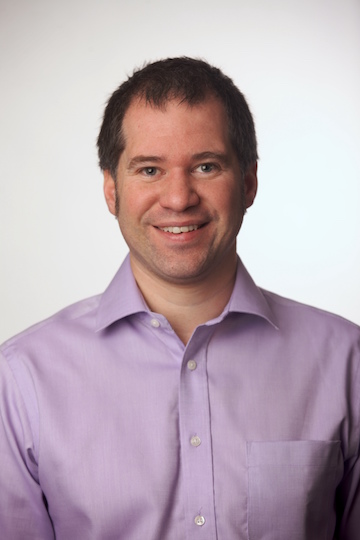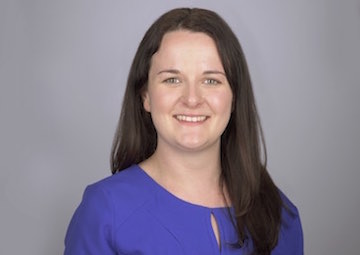
Financial Planners: The key to a good CRM system

Financial Planning businesses play host to a plethora of data from fact finds, application forms, CRM systems and platforms but are planners taking full advantage of the potential of technology to improve efficiency?
What are the critical things to get right with CRMs and how can Financial Planners improve their own systems?
Toby Ellington CFPTM Chartered MCSI, head of systems & processes at Equilibrium, said: “For me, there are two key aspects for using a CRM. Firstly, it has to be easy to get data
Ellington CFPTM Chartered MCSI, head of systems & processes at Equilibrium, said: “For me, there are two key aspects for using a CRM. Firstly, it has to be easy to get data into the system, both the initial data and also ongoing inputting and maintenance. Secondly, it must be easy to get data out of the system and in multiple formats, whether in Excel spreadsheets or professional looking Word or PDF documents.
IFP past president Marlene Outrim CFPTM Chartered MCSI, managing director of Uniq Family Wealth in Wales, said: “Ease of use for our entire team, from professional support to the Financial Planners, is essential, as you can have the most sophisticated software but if it isn’t user friendly this leads to frustration, and generally more time spent on it, which is a cost to the business. The majority of the systems and tools we use are from companies who have the experience and capital to keep ahead of regulatory and consumer changes.”
Mark Brownridge CFPTM Chartered MCSI, research and development senior manager at Accredited firm Mazars, said it was vital that planners test systems for themselves in their own environment to see if they work, rather than believing marketing hype. He said: “We have found many systems simply can’t communicate with ours and this renders them unfit for purpose.”
Mark Loosmore, executive general manager (wealth), IRESS, said that it was important for planners to get the tech right because shrewd use of it, along with data, can “take out some of the donkey work” involved in research and on-going portfolio monitoring.
He said: “No one gets particularly excited by data (or at least we don’t tend to admit it if we do) but maybe we should pay this humble commodity a little more attention.
“After all, financial products are, essentially, built on data while financial advice comes from interpreting data provided by the client. In its crudest form, data is a set of disconnected values; the building blocks of useful information.”
In this Special Report we asked Financial Planners for their views on the systems they like and use and what the advantages and disadvantages are of each.
The views of Toby Ellington CFPTM Chartered MCSI Equilibrium, Head of Systems and Process

What Financial Planning Software systems are you using and what are the pros and cons?
We use Voyant Financial Planning Software. This has become an integral part of our ongoing review process, as we have found that it allows clients to more easily visualise their financial future based on various assumptions. In some situations it has given them the confidence to spend a little more and really enjoy their retirement while also being secure in the knowledge that they will still have sufficient capital if needed, for example for long term care. We can stress test the portfolio for a theoretical market downturn or period of low returns, ensuring that even in the worst case scenario, the client is secure for life. If there is a potential shortfall, we can discuss options with the client to fill the gap. The software allows us to easily update the details on an annual basis, thereby creating a more accurate picture over time.
Of course it is important that we advise clients that the projections are not guaranteed. They are based on assumptions around inflation, total returns, lifespan of the client and their circumstances which could all change significantly in the future. However, as long as the client is aware of these limitations, it can be an incredibly useful tool.
What Client Relationship Management systems do you use and what works well? What tips would you pass on about getting better CRMs?
We use Curo from Time4Advice. This is based on Microsoft Dynamics and is used as our primary back office system. We use it for document production through the XperiDo add on which has dramatically improved our ability to standardise document output. The valuations from our two main platform providers are uploaded on a daily basis and we use this as part of the discretionary management of client accounts. We also use it to support our new business processes, monitoring client sources and tracking prospective clients from first contact to sign up.
For me, there are two key aspects for using a CRM. Firstly, it has to be easy to get data into the system, both the initial data and also ongoing inputting and maintenance. Secondly, it must be easy to get data out of the system and in multiple formats, whether in Excel spreadsheets or professional looking word or pdf documents.
Which back office systems do you use to run your accounts, company management and so on? What are the pros and cons of each?
We currently use SAGE 50 as our accounts package. However as our current version of Sage is coming to the end of its support cycle, it has given us an opportunity of reviewing different options rather than automatically upgrading Sage to the latest version. We have found limitations in SAGE 50 as we have grown, hence the review, but there is always a balance between these improvements with the cost of implementing and customising a new system. We also use the CRM, CURO system in the back office too, in order to record the income due, paid and forecast. It is important that advisers and client managers are able to easily see what fees are payable and have been paid by individual client but as this is held in CURO it is there together with all the other client information. Information from both CURO and SAGE is often exported into Excel for further analysis.
What have been your best and worst tech choices in the last five years?
Best: We use Volume from Watermark Technologies as our document management system. We started using it about five years ago and it has completely removed the need for us to store paper files. It is a very intuitive, simple to use system that allows our staff to maintain detailed client files that support our business and compliance processes.
Worst: We have tested some really poor investment platform providers over the years, which have not come close to delivering the functionality, or service they promise. It is very important to thoroughly test platforms with some small live cases as part of a full due diligence process.
What criteria do you use when choosing a system and why?
It depends on the system. When we were looking to replace our CRM software, we appointed an external project manager to identify relevant criteria (the list of which seemed endless) and research the most suitable options.
The views of Gemma Williams CFPTM Chartered MCSI Financial Planner and Marlene Outrim CFPTM Chartered FCSI Managing Director at Uniq Family Wealth


What Financial Planning Software systems are you using and what are the pros and cons?
We believe that Prestwood/Truth planning software is one of the best and most comprehensive Financial Planning tools around. Over the years we have seen new entrants to the market with some being particularly impressive in terms of user facing but, we value Prestwood/Truth’s capability to model almost any imaginable scenario.
In addition their back office support is always fantastic, as well as their courses and online tutorials. The only downside has been the migration to cloud based software but this was not due to Truth but rather internet issues experienced in our office. The software is constantly evolving and Prestwood listens to the needs of Financial Planners.
What Client Relationship Management systems do you use and what works well? What tips would you pass on about getting better CRMs?
Again we use Prestwood because it enables us to use one piece of software rather than a number that we have to keep dipping in and out of. Although not primarily a CRM system in the truest sense, we are able to obtain the information we need for our MI rather than for selling as our KPIs are focused on the former.
What have been your best tech choices in the last five years and the worst?
Prestwood provides a complete system for us. It is more efficient, we find, although we probably don’t utilise all the facilities and features as well as we could. However, information for the Gabriel report, for example is easily accessible on Prestwood and this has drastically cut the amount of time required in putting the report together, which keeps our head of compliance very happy.
Which back office systems do you use to run your accounts, company management and so on? What are the pros and cons of each?
Best: SelectaPension, a defined benefit transfer analysis tool. Work surrounding Pension Freedoms increased significantly and this tool provides accurate TVAS reporting and has been easier to use compared to some of its rivals.
Worst: One platform we used takes an inordinate amount of time to bed and breakfast funds from GIA to ISA, whereas with another platform, it is just one click.
What criteria do you use when choosing a system and why?
Ease of use for our entire team, from professional support to the Financial Planners, is essential, as you can have the most sophisticated software but if it isn’t user friendly, this leads to frustration, and generally more time spent on it, which is a cost to the business. The majority of the systems and tools we use are from companies who have the experience and capital to keep ahead of regulatory and consumer changes. Cost is important too, but not necessarily an over-riding factor. We employ a consistent due diligence process for all of our tools and software to ensure what fits best with our company and our plans for the future. We are currently trialling some innovative software.
The views of Mark Brownridge CFPTM Chartered MCSI Research and Development Senior Manager at Accredited Financial Planning FirmTM Mazars

What Financial Planning Software systems are you using and what are the pros and cons?
We use Voyant for cashflow planning. As an Accredited Financial Planning FirmTM, cashflow planning is a vital weapon in our advice armoury and we made the decision to switch to Voyant a couple of years ago as Voyant was cloud based and gave us greater flexibility, particularly when you have a number of planners across different locations who are out and about seeing clients. I know our previous supplier has moved to a cloud-based version now but we still find Voyant to be slightly fresher looking and more dynamic when used in front of clients. This is the key, using the system in front of clients to get their input and engagement early on and Voyant is very intuitive and easy to use with clients. We use iPads and Voyant have just introduced Voyant Go which allows you to use Voyant on an iPad. It’s more limited than the full version and we have had some teething trouble with it but we hope it will give us even greater flexibility.
What Client Relationship Management systems do you use and what works well? What tips would you pass on about getting better CRMs?
As we are part of a wider accountancy firm, we sometimes have to share systems with the LLP and CRM systems are a good example. We use Sugar predominantly to track work wins, progress and for marketing across all parts of the business. This does occasionally have its frustrations for us as a Financial Planning firm but the big plus is that is that it gives us access to the clients of other parts of the business which we might otherwise not be aware of. This gives us a great source of referrals. As with all CRM systems, Sugar is “rubbish in, rubbish out”. In other words, if you input incorrect data, the system spits out information that is unusable so we undertake a number of data cleansing exercises to make sure our data is as clean as possible and gives us the results we need.
What have been your best and worst tech choices in the last five years and the worst?
Best: CompanyApp Presenter - a document management system. Through it we can create, manage and distribute good looking, interactive sales presentations that engage clients and look far better than PowerPoint. Presenter puts us in control of our sales and marketing materials and provides us with insights into the effectiveness and ROI of all our campaigns, via comprehensive metrics and reports. It also manages all our company’s digital sales and marketing materials from a single, centralised content library. Wherever planners are, the presentation app can send updates to our whole team immediately.
Worst: We don’t have a worst. What I would say is that we have looked at a number of tech systems and trialled plenty. I’d recommend to planners that they don’t believe the marketing hype, test systems for yourself in your environment to see if they work. We have found many systems simply can’t communicate with ours and this renders them unfit for purpose. Secondly, be wary of being a guinea pig. Newer tech solutions will often want to use a Financial Planning firm to act as their guinea pig to test their technology on and iron out problems as they go along, This will take up your time, resource and potentially money if you are working on a daily rate basis. Just as with any house building project, expect the cost of any tech project to exceed your initial estimate so build in a reserve and manage the costs carefully.
What criteria do you use when choosing a system and why?
We operate a ‘best of breed’ approach to tech and ideally identify and use the technology that fits our business and gives us business efficiencies. Additionally, our criteria includes the need to make changes and the increasing complexities and costs of handling systems in our IT environment. Where we believe we can improve functionality and gain better integration with other existing software we will if it can be proved it will lead to increased efficiencies and cost savings. Each tech project will have its own individual list of criteria and requirements and you need to identify what’s important to you and your business well in advance of commencing any tech project.
CBSI Corporate Member and Technology Firm Iress looks at how technology could change financial planning.
Technology ‘disrupters’ will change the face of Financial Planning but Paraplanners will continue to be in demand, says Colin Sloss, senior business development manager at IRESS.
Mr Sloss spoke to the CISI Paraplanner Conference in May and told delegates that robo and digital advice providers, new entrants and recent entrants to
the financial services sector would be part of a ‘mega-trend’ in the same way that Uber had been for taxis but no single channel would dominate.
He told Paraplanners: “I believe Paraplanners have a big role to play in how digital advice is delivered. Expect a world of omni-channel advice with face-to-face, digital and so on and become that point of digital aggregation. Improve your client experience in a visually stunning way offering clients easy access to their provider.
“Paraplanners will remain an intrinsic and valuable part of the Financial Planning process but current software tools need to be more joined up. Disrupters will continue to emerge and complacency is not an option.”
Research, however, suggested that much would depend on how efficient the client portal was, because clients would expect more, he said. He warned that the current ways of Paraplanning and Financial Planning were often disparate and ‘unjoined-up’.
Too much paper was still involved and re-keying was still a key element in the process and this had to change. Digital entry by the client was one way forward.
IRESS research showed that what clients wanted from fintech was the ability to see all their finances in one place including their mortgage, investments and pensions, he said, adding the Pensions Dashboard plan would help but more was needed.
While he thought robo-advice was over-talked about it was already a rapidly expanding market and several major providers such as Schroders, Aberdeen and Fidelity were already taking stakes and making investments in robo-advice type companies.
For Paraplanners, however, he said: “Robo advice is not the be all and end all, the real challenge is how we engage with our clients more efficiently. Think about the number of systems you use in your practice and think how much more efficient it would be if you had one system.”
Key Points
1 – Don’t believe the marketing hype, test systems for yourself in your environment
to see if they work.
2 - Ease of use for
the entire team, from professional support to the Financial Planners, is essential.
3 - A CRM must be easy to get data out of the system and in multiple formats, whether in
excel spreadsheets, Word or PDF documents.
